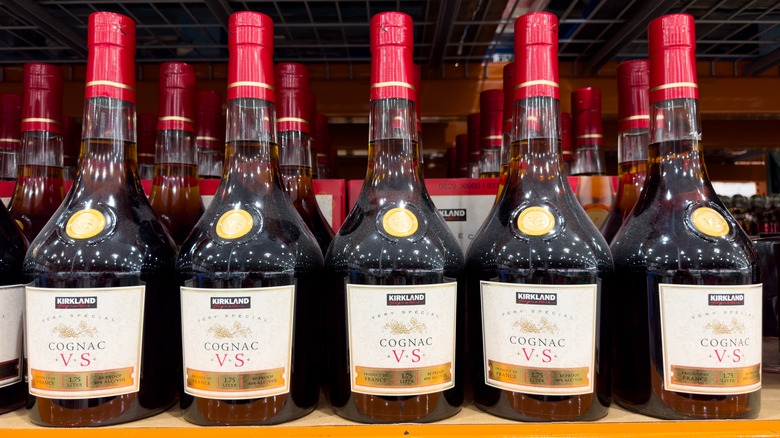Martha Stewart Adds This Boozy Ingredient To Make Her Chicken Pot Pie Extra Luxurious
Chicken pot pie has always carried a reputation for being the ultimate comfort dish – its creamy filling, flaky crust, and familiar flavors just feel like home and a warm hug from grandma at the same time. When Martha Stewart hooks us up with a recipe revamp to enhance a familiar dish, we trust her expertise. Stewart doesn't shy away from that tradition, but in her version of the recipe, she slips in one small surprise that changes the character of the dish entirely. A splash of Cognac, folded into the filling as it simmers, adds both warmth and a faint sweetness that you don't expect in such a classic preparation. The French spirit brings out the richness of the chicken while layering in subtle notes of oak and dried fruit.
That's the beauty of Stewart's approach; the core of the dish remains intact, with tender chicken, carrots, peas, and a creamy base, yet the flavor profile tilts into something more sophisticated that you could serve at an adult-only dinner party. Cognac has long been prized in French kitchens for its ability to deepen sauces and stews, so its role here feels both natural and elevated. Instead of being overwhelmed by cream and butter, the palate picks up an extra layer of depth that lingers without making the whole thing taste boozy.
Cognac's roots in classic cooking traditions
Cognac may feel like a surprising addition when making a homestyle chicken pot pie, but its use actually echoes a long tradition in European kitchens. French cooks have leaned on brandy and fortified wines for centuries, using them to enrich sauces, braises, and stews. Cognac in particular has a reputation for making the flavor deeper without going overboard, and it shows up in everything from pan sauces for steak to Ina Garten's beef stew to the creamy backbone of a coq au vin. When Stewart incorporates it into her pie filling, she's tapping into that same lineage — borrowing a technique with a proven history of adding a touch of luxury and elegance to hearty dishes.
The usage of Cognac is also a subtle reminder that innovation in cooking often comes not from reinventing a dish, but from borrowing time-tested moves and adapting them to new settings. In Stewart's case, that small pour of Cognac ties her recipe to a broader story of how chefs have used spirits to transform the ordinary into something memorable for centuries.


